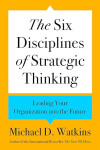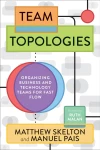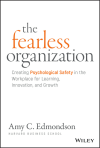An Elegant Puzzle
Systems of Engineering Management
"An Elegant Puzzle" presents a systems-based approach to engineering management, focusing on the interconnected challenges of growing organizations, building effective teams, and managing technical complexity. The book combines practical frameworks with real-world experience from Larson's work at major tech companies.
The book addresses common management challenges by viewing them as systems problems, providing specific metrics, models, and approaches for different scales of organization. It covers everything from optimal team sizes to succession planning, breaking down complex organizational challenges into manageable components.
Larson's approach emphasizes the importance of understanding system dynamics in management decisions, showing how changes in one area affect others. The book provides concrete tools for measuring team health, managing organizational growth, and making strategic decisions about technical architecture.
By reading "An Elegant Puzzle", you will:
- Master systems thinking approach to management: Understand how different parts of engineering organizations interact and how to make intentional changes that consider these relationships
- Apply specific frameworks for team sizing and organization: Learn practical approaches to structuring teams for optimal performance, including specific numbers for different types of management roles
- Develop strategies for organizational growth: Understand how to diagnose team health, manage hiring, and guide teams through different stages of growth
- Create effective technical decision-making processes: Learn how to balance centralization and autonomy, manage technical debt, and make architectural decisions
Books to Follow
- "Team Topologies" by Matthew Skelton and Manuel Pais: Provides complementary patterns for organizing engineering teams
- "The Phoenix Project" by Gene Kim: Offers additional perspective on systems thinking in technical organizations
- "Thinking in Systems" by Donella H. Meadows: Deepens understanding of systems thinking principles
- "High Output Management" by Andy Grove: Provides foundational management concepts that complement Larson's frameworks
Optimal Team Sizing
Teams require specific sizes to function effectively. Teams smaller than 4 engineers struggle to abstract away individual contributions, while managers should work with 6-8 direct reports. This framework helps leaders make decisions about team structure and growth.
Team Growth States
Teams exist in one of four states: falling behind, treading water, repaying debt, or innovating. Understanding these states helps leaders diagnose problems and apply appropriate solutions, whether through hiring, consolidation, or process changes.
Systems Thinking in Management
Management challenges should be viewed as systems problems with stocks (accumulations) and flows (rates of change). This perspective helps leaders understand how different parts of the organization interact and influence each other.
Succession Planning
Leaders should actively document their work and plan for succession, considering how the organization would function without them. This includes identifying gaps and developing plans to fill them.
Policy and Exception Management
Effective policies require careful handling of exceptions. Rather than undermining consistency, well-managed exceptions can help refine and improve policies over time.
Q: How do you determine the right size for engineering teams?
A: The book provides specific guidelines: Teams should have at least 4 engineers to function as true teams rather than collections of individuals. Managers should oversee 6-8 engineers, while managers of managers should support 4-6 managers. These numbers optimize for communication overhead and team effectiveness.
Q: How should leaders approach organizational growth?
A: Growth should be approached systematically, focusing on one team at a time rather than trying to fix everything simultaneously. The book recommends “stacking small wins” rather than seeking silver bullets, and emphasizes the importance of understanding team states (falling behind, treading water, etc.) to make appropriate interventions.
Q: How can managers balance long-term improvement with short-term delivery?
A: The book recommends focusing on one team at a time, ensuring they reach a stable state before moving to the next challenge. It’s important to avoid breaking well-functioning teams and to recognize that fixing organizational problems takes time and patience.
Q: What’s the best way to handle technical decision-making processes?
A: The book advocates for a balanced approach between centralization and autonomy, using concepts like “positive and negative freedoms” to guide policy-making. It emphasizes the importance of clear ownership and structured decision-making processes while avoiding excessive constraints.
- When scaling engineering organizations: You need frameworks for growing teams effectively while maintaining productivity and quality
- During organizational restructuring: You’re facing decisions about team structure, size, or reporting relationships
- When establishing management processes: You need to create or refine systems for technical decision-making, project management, or team operations
- As you transition to engineering leadership: You want to understand the systems perspective of engineering management

Your support helps me maintain and improve the book recommendations for everyone.










